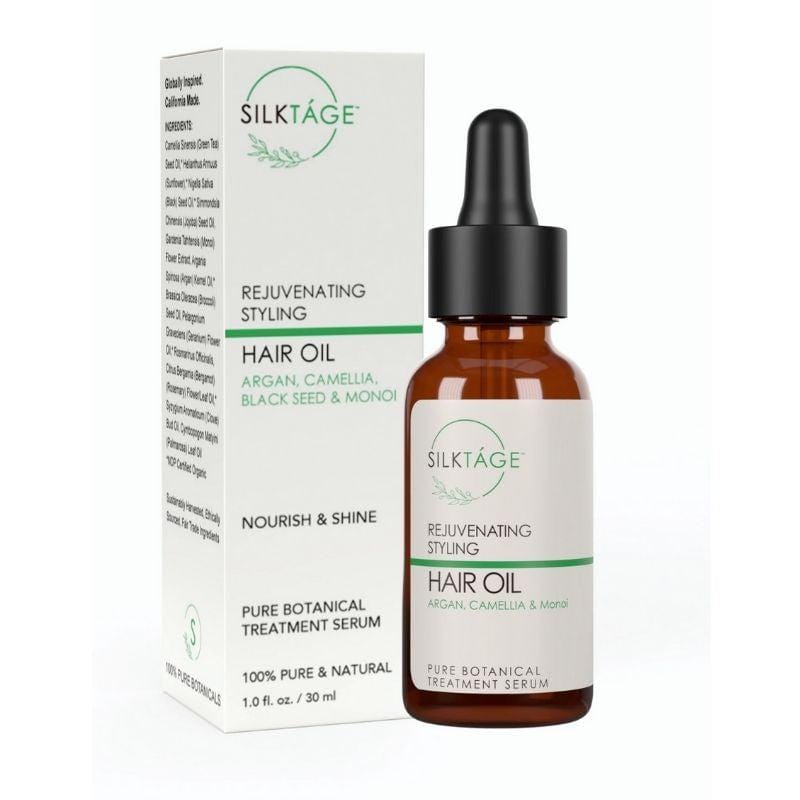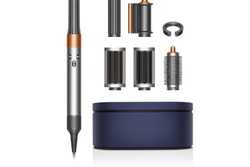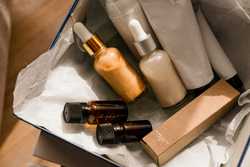How to Tell if Your Hair is Damaged

Our evaluations and opinions are not influenced by our advertising relationships, but we may earn a commission from our partners’ links. This content is created by TIME Stamped, under TIME’s direction and produced in accordance with TIME’s editorial guidelines and overseen by TIME’s editorial staff. Learn more about it.
With all the strain we put our hair through, between getting it dyed, highlighted, and using plenty of heat products on it, our hair takes a beating. It may look ok if you can mask it with temporary leave-in conditioners or work to straighten it so it kinda hides the split ends, but how can you really tell if your hair is damaged? I spoke with Robin Emtage, celebrity hairstylist, makeup artist, and founder of SILKTÁGE Tropical Beauty Fusion for Skin, Hair, & Scalp to find out how to tell if your hair is damaged and how to repair damaged hair.
First things first. How can you tell if you actually have damaged hair? “Damaged hair refers to hair that has suffered structural impairment, whether to the cuticle (the hair's protective outer layer) or the cortex (the core that provides strength and moisture),” said Emtage. “Damage can make the hair weak, dull, and prone to breakage and split ends. It is typically the result of chemical exposure, heat styling, environmental stressors, or rough physical handling.”
If you’re still unsure if you have damaged hair, look for the signs. “You can look for several indicators to determine if your hair is damaged,” said Emtage.
Texture changes can definitely be an indicator of damaged hair. “Your hair feels rough, dry, or brittle to the touch,” said Emtage.
If you notice pieces breaking off regularly, that can be a sign, as well. “Noticeable breakage or shorter strands without having cut your hair” can be an indication of damaged hair, said Emtage.
Of course, split ends are a telltale sign there’s some damage. “The ends of your hair are split or frayed,” said Emtage.
If your hair is dry and frizzy, that can be a sign of hair damage. “Hair that is hard to moisturize or stays dry despite using conditioners,” said Emtage.
Some tangles are normal, but if you’re experiencing a lot, that can be a bad sign. “More tangles than usual, which can be difficult to comb out,” said Emtage.
Nice, luscious hair is a sign of healthy hair, so if it’s looking dull and dingy, it probably needs some love. “Lack of shine and luster, making the hair appear lifeless,” said Emtage.
If you aren’t seeing that bounce that indicates fluffy, silky, healthy hair, that can be a sign of damaged hair. “Hair that doesn’t bounce back or stretch when wet before breaking,” said Emtage.
Don’t just let it go. There are things you can do to improve the damage that’s been done. “Caring for and repairing damaged hair involves several strategies,” said Emtage.
Keep up to date on your regular haircuts and trims. “Regularly trim your hair to remove split ends and prevent further splitting,” said Emtage.
“Minimize the use of heat on your hair or adjust the temperature settings on your devices,” said Emtage. You can also alternate using a hair dryer with air drying.
Pay attention to the ingredients and avoid damaging products full of chemicals. “Choose sulfate-free shampoos, nourishing conditioners, and leave-in treatments that help restore moisture,” said Emtage.
Whether you’re using hair-growth products or leave-in deep conditioners, conditioning can be a great way to keep your hair healthy and moisturized. “Apply a deep conditioning mask once a week to nourish the hair,” said Emtage.
This may not be an obvious one, but hairstyles that are far too tight can actually be damaging to your hair. “Opt for hairstyles that do not pull on the hair or scalp too tightly,” said Emtage.
I’m guilty of it. I definitely feel my best after a full head of highlights, but it might be time to embrace your natural color if your hair is looking damaged. “Reduce the frequency of dyes, perms, and relaxers that chemically alter hair,” said Emtage.
“Maintaining healthy hair can be straightforward with a good routine,” said Emtage.
Regular washes can be good for your scalp. “Keep your scalp and hair clean to avoid build-up of dirt and oils,” said Emtage.
It begins with gut health. “Eat a balanced diet rich in vitamins and minerals, particularly vitamins A, C, E, and B vitamins, as well as iron, zinc, and omega fatty acids,” said Emtage.
Hydration is great for your health in general, including hair health. “Staying hydrated is key to maintaining the natural moisture levels of your hair,” said Emtage.
Pay attention to the products you’re buying and read the ingredients. “Avoid products with harsh and synthetic ingredients like sulfates, parabens, and sodium laureth sulfate, which can strip dry or fine hair of its natural oils, leading to increased fragility and breakage,” said Emtage.
Natural oils are great for working their way through damaged hair. “Consider using a natural, lightweight hair oil with argan oil, camellia oil, and rosemary oil like SILKTÁGE Rejuvenating Styling Oil if your hair is dry and prone to split ends and damage,” said Emtage.

Whether you visit a spa or do it yourself, massaging and working the products into your scalp can improve hair damage. “Regular massages and treatments promote blood circulation and health of the scalp. Consider using a scalp treatment, especially if it's dry or flaky, to maintain its health and prevent further hair damage,” said Emtage.
As always, it depends on the level of damage, but there are always things to try. “For maintaining healthy hair, consider incorporating hair care products that are gentle and designed to strengthen and moisturize hair. Ingredients like natural oils (coconut, argan, camellia, and castor oil), aloe vera, and proteins can be beneficial,” said Emtage.
Making sure your body has the right vitamins can help with hair growth and overall hair health. “Ensure your diet includes adequate biotin, vitamin D3, vitamin C, vitamin K, and zinc, or consider supplements if your dietary intake might be lacking,” said Emtage.
Just like with your skin care and overall health care, a regimen helps. “Establish a routine that includes periodic deep conditioning and protective styling. Limit washing your hair to a few times a week to prevent stripping its natural oils, and use a silk or satin pillowcase to reduce breakage from friction,” said Emtage.
The information presented here is created by TIME Stamped and overseen by TIME editorial staff. To learn more, see our About Us page.



